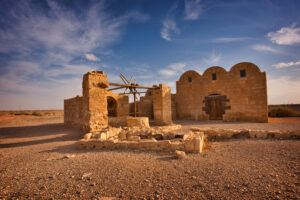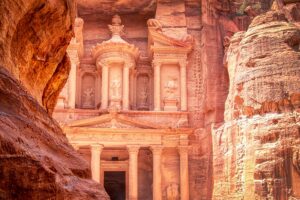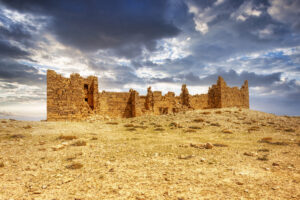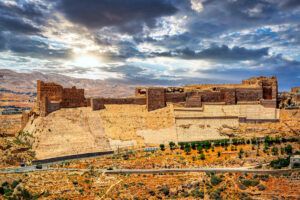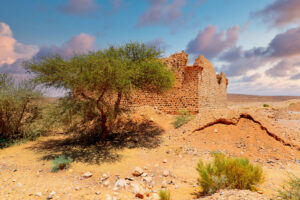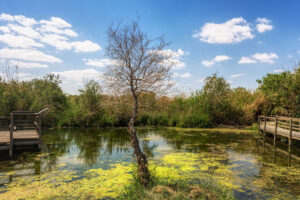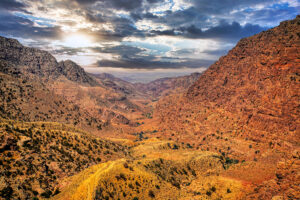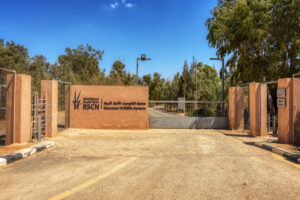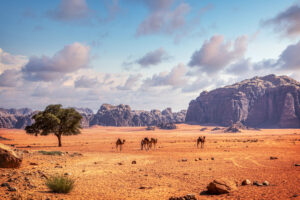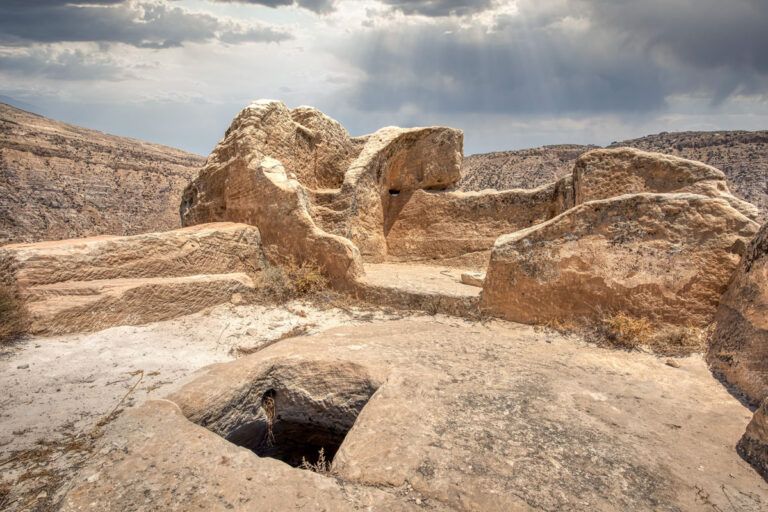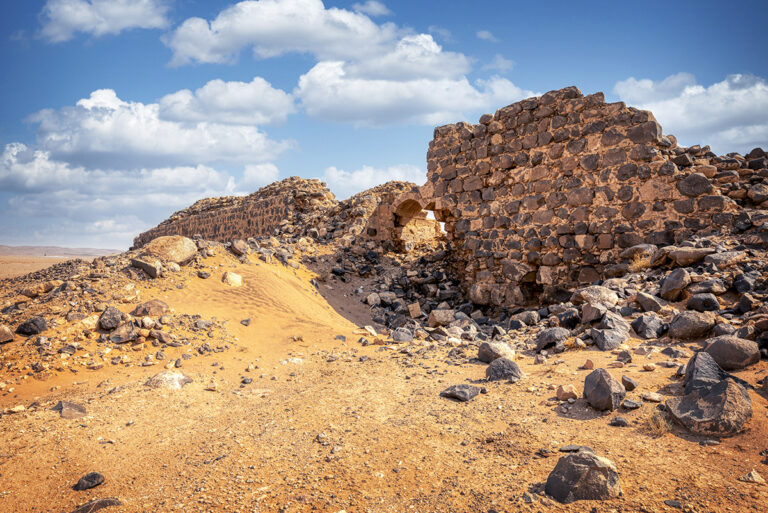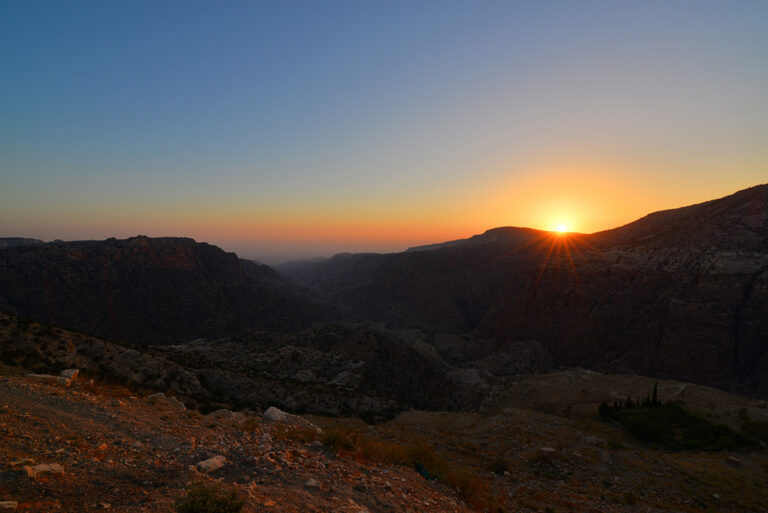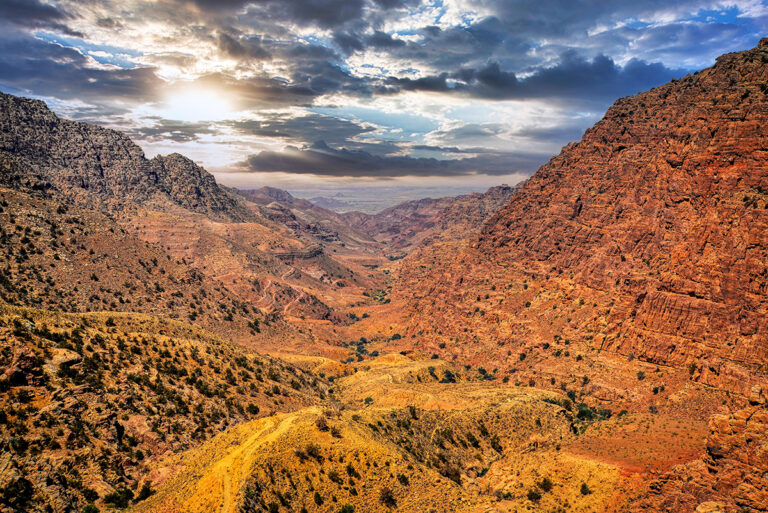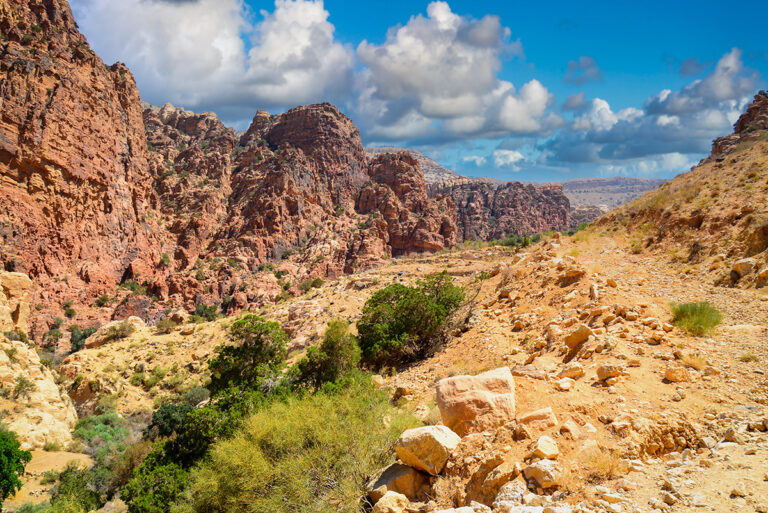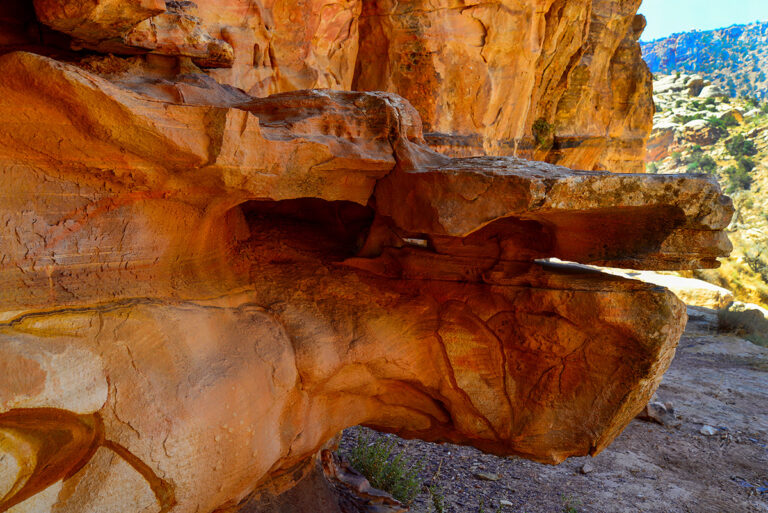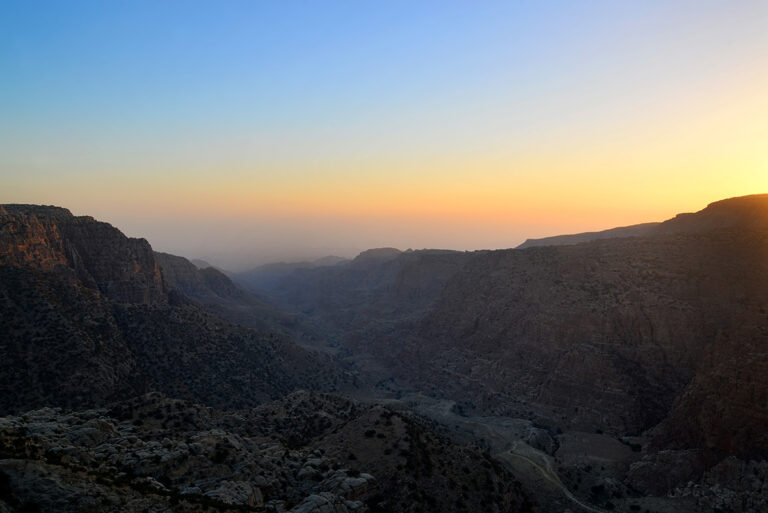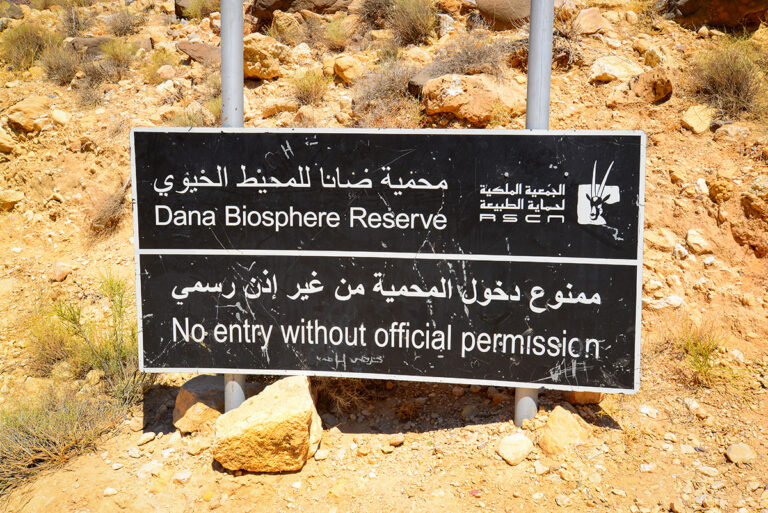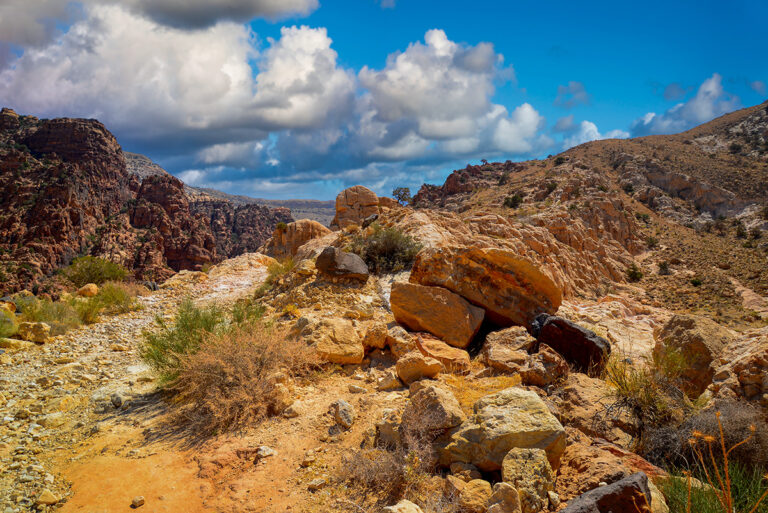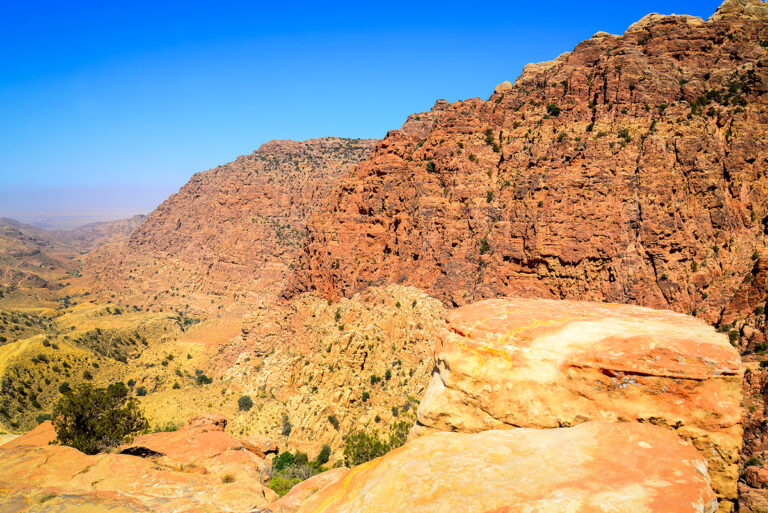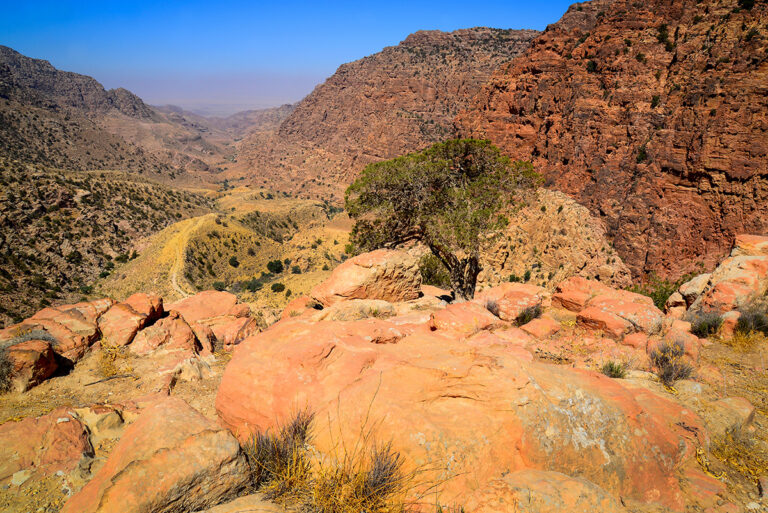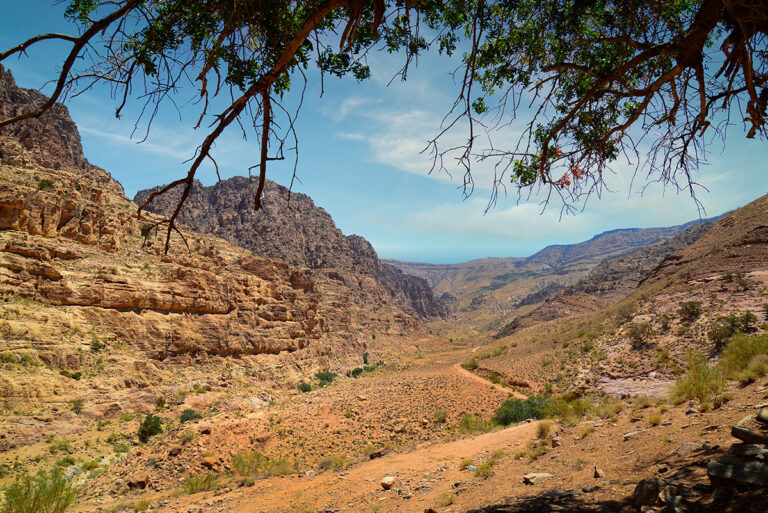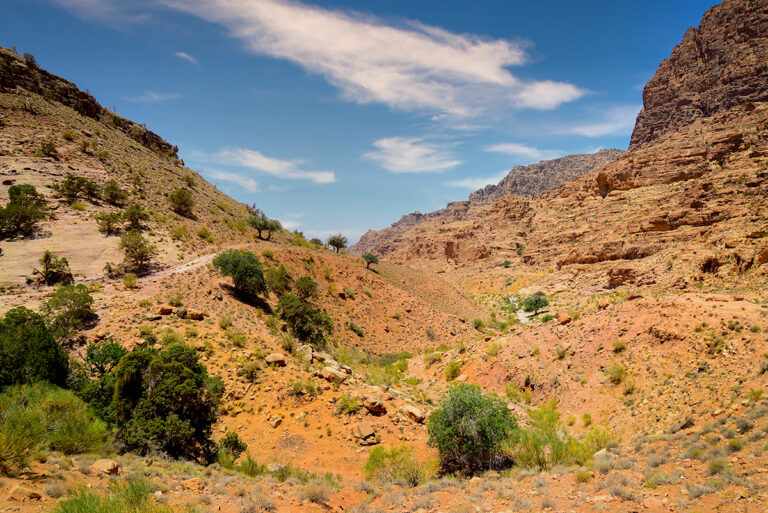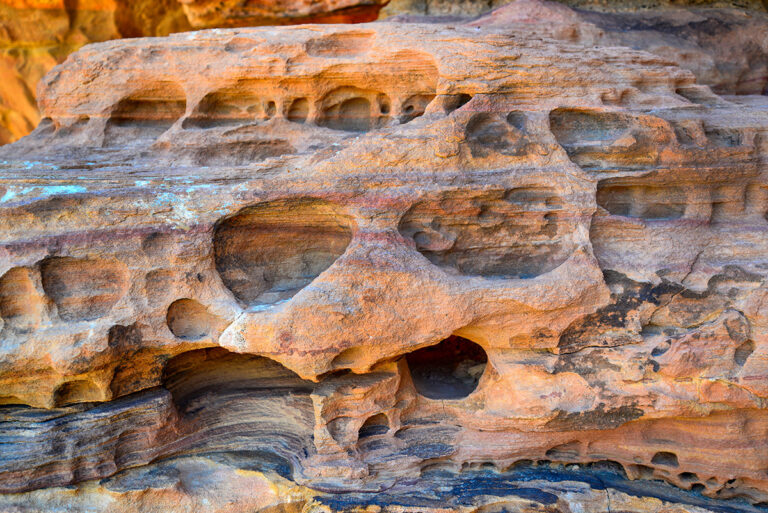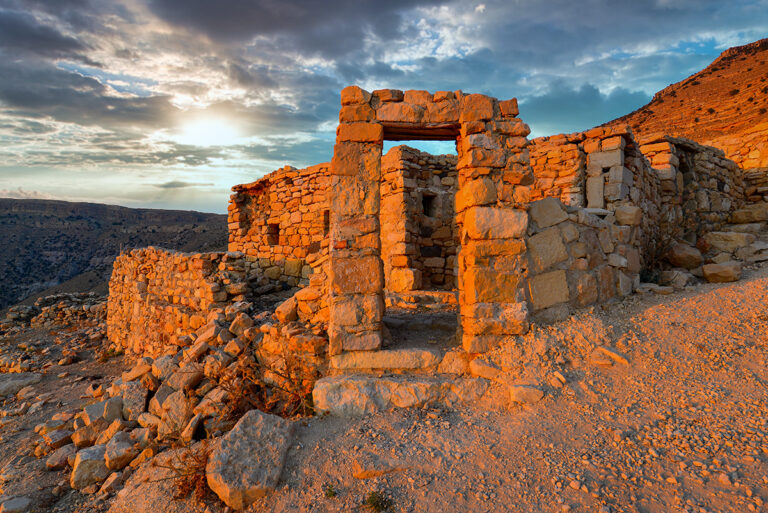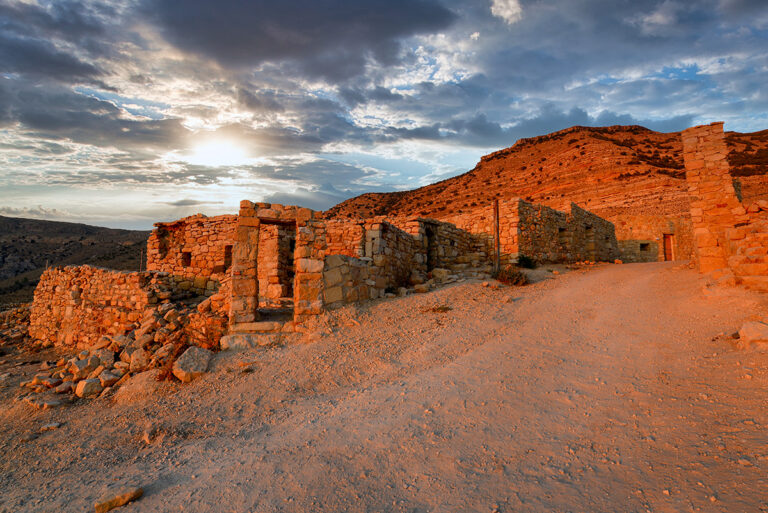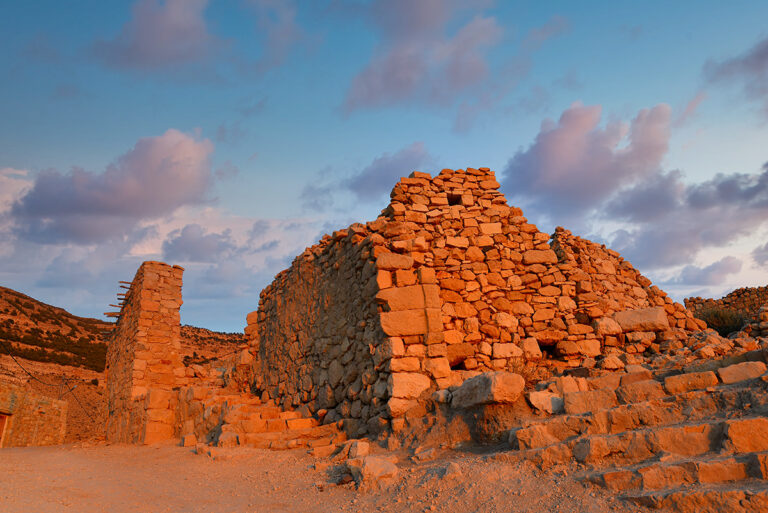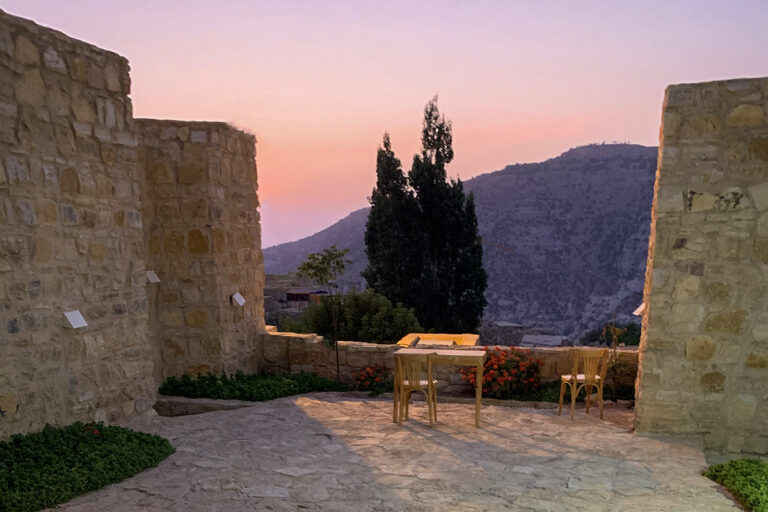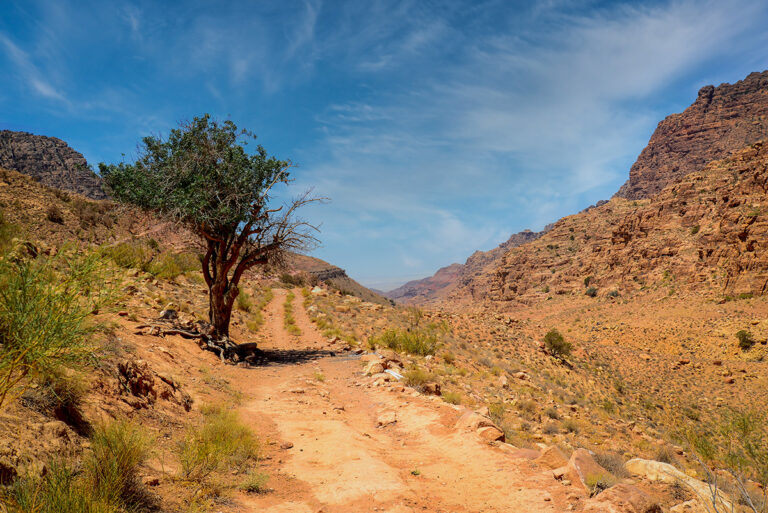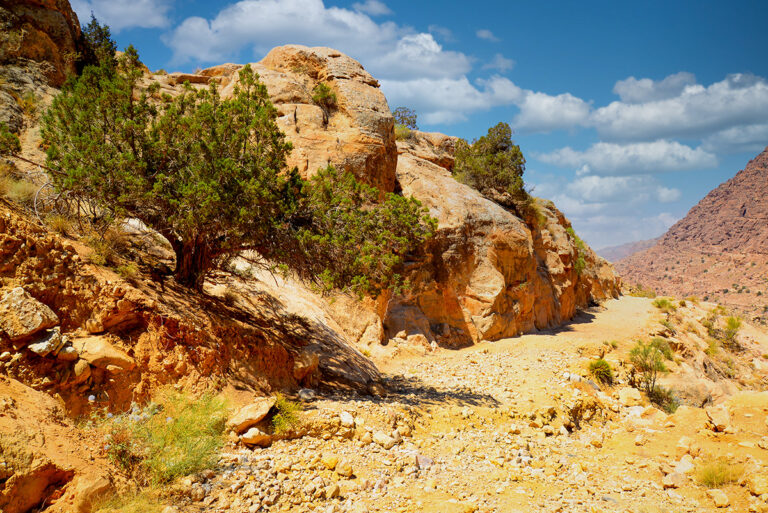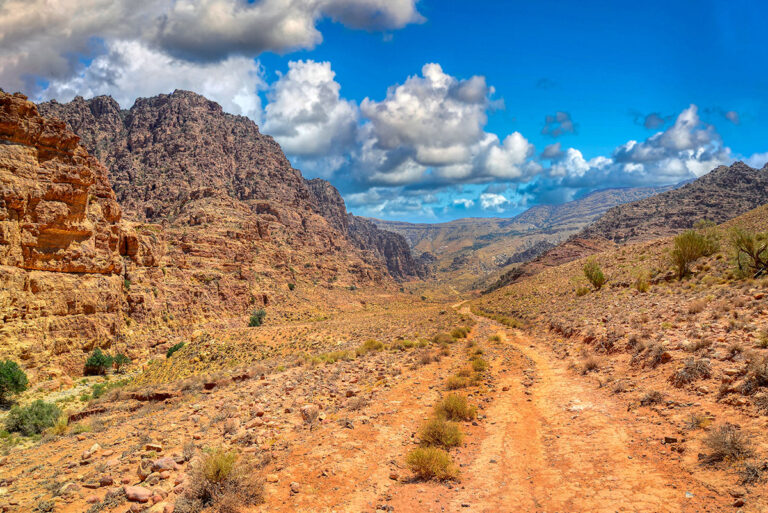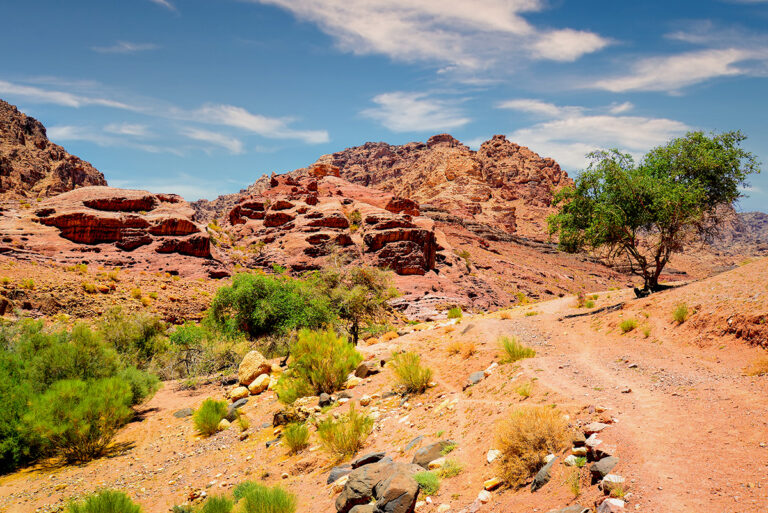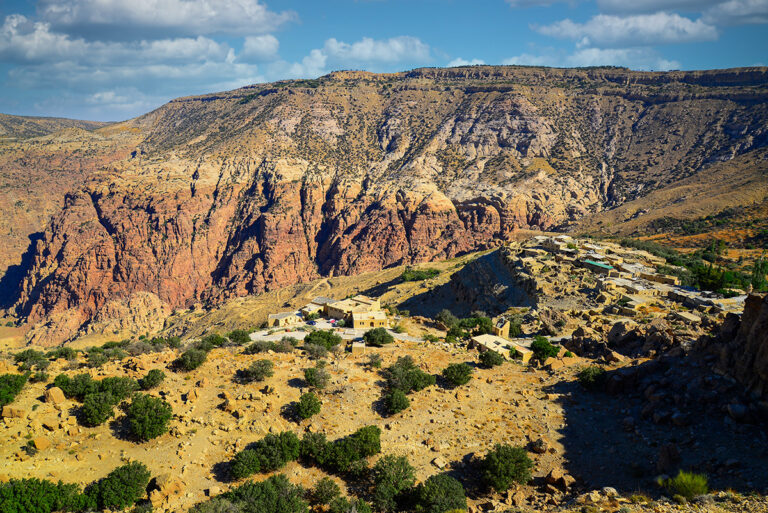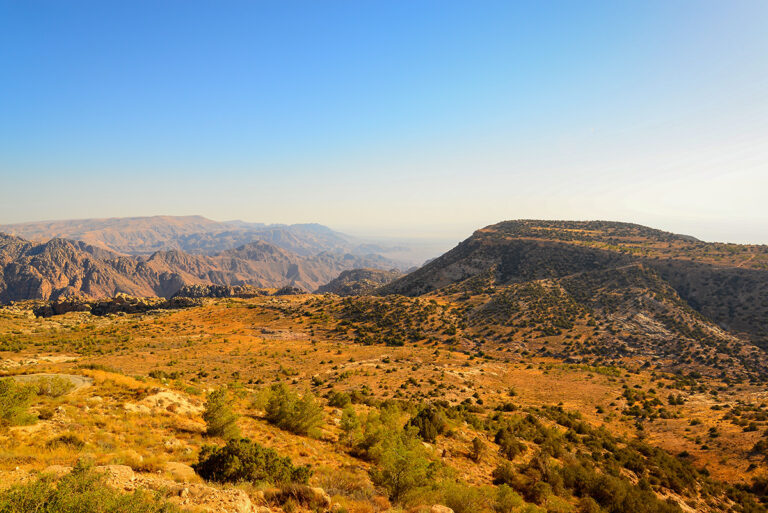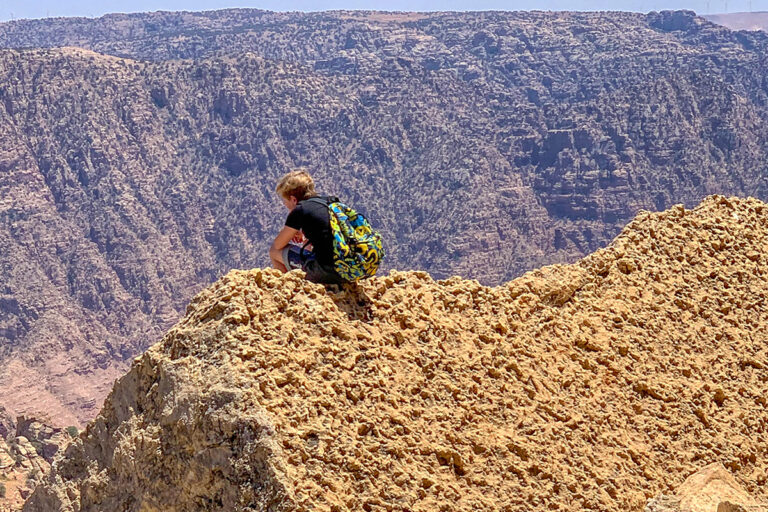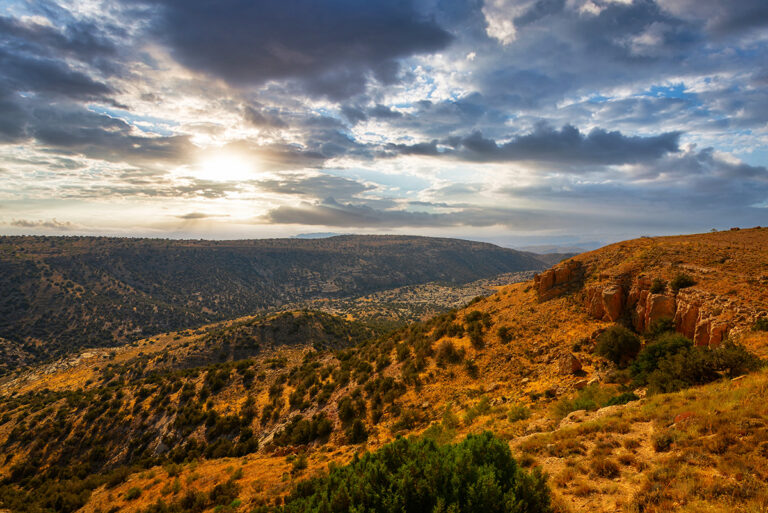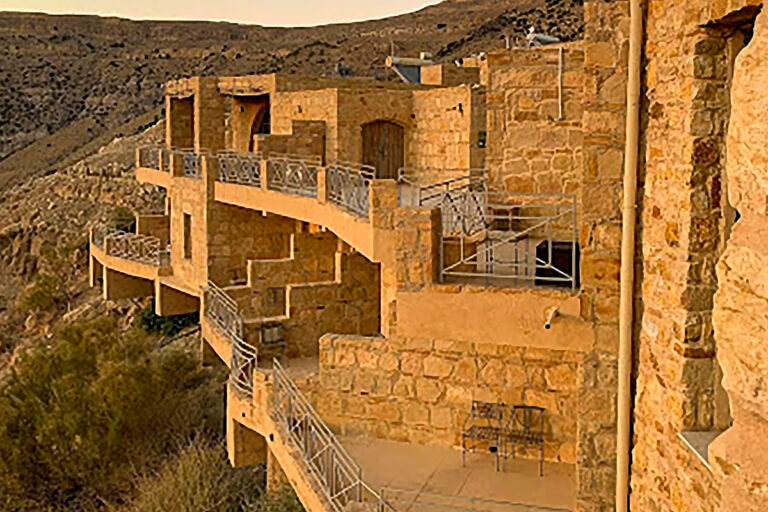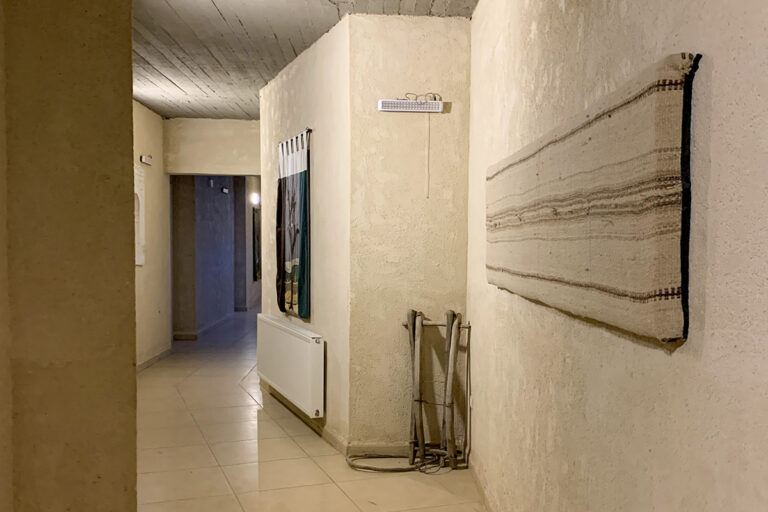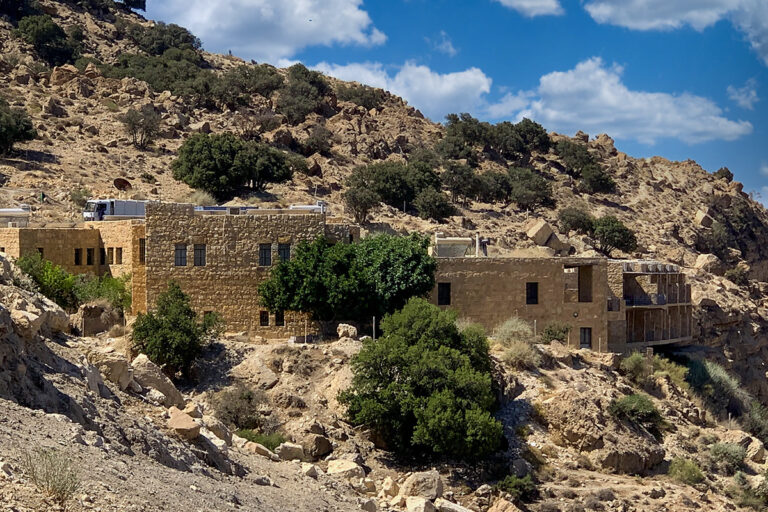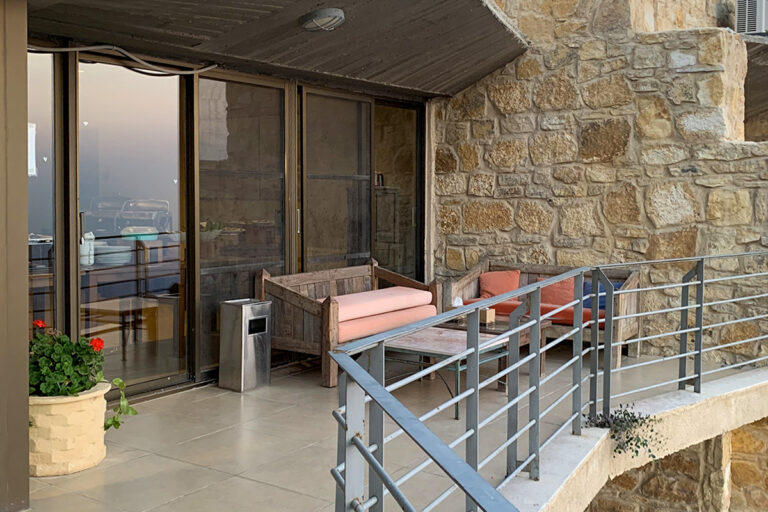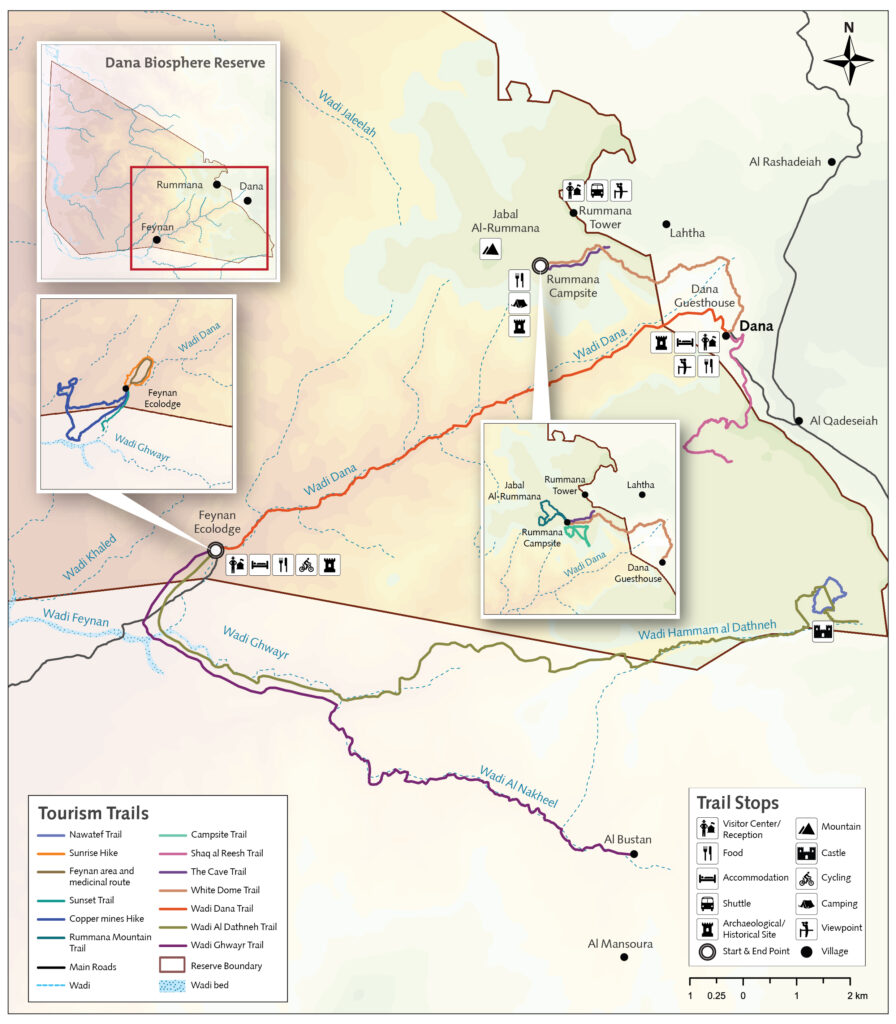Nestled in the rugged hills of southern Jordan, 200km from Amman, lies an unparalleled haven for nature lovers and eco-tourists—the Dana Biosphere Reserve. This vast reserve isn’t just Jordan’s largest; it’s also one of the region’s most biodiverse areas, offering a perfect blend of natural beauty, ecological significance, and sustainable tourism.
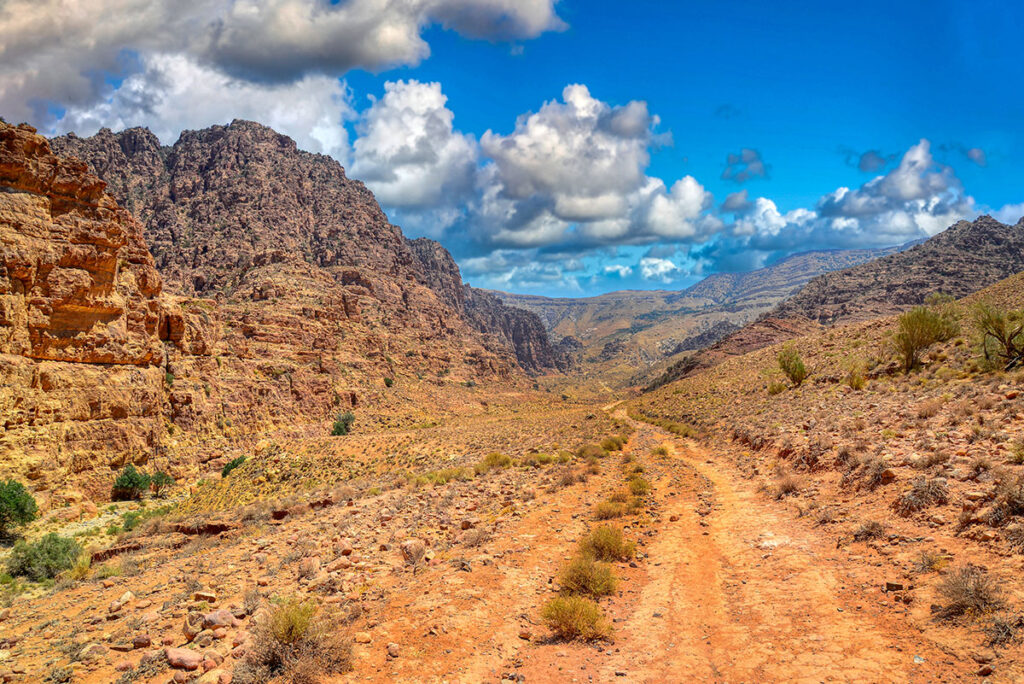
A World of Ecosystems in One Reserve
What sets Dana apart is its extraordinary variety of ecosystems—each brimming with life and wonder. The 320-square-kilometre expanse stretches from arid desert lowlands at just 50 metres above sea level to cool, verdant oak woods at an impressive 1,500 metres above sea level. This dramatic range of elevations creates habitats for more than 800 plant species, 190 bird species, and 37 mammal species—many of which are rare or endangered.
You may find yourself marvelling at the bright blooms of the black iris, Jordan’s national flower, or catching the graceful movements of the Nubian ibex as it traverses rocky cliffs. Meanwhile, bird watchers flock here for sightings of majestic griffon vultures or the elusive Syrian serin, a globally threatened bird species. This living kaleidoscope of flora and fauna makes Dana Biosphere Reserve a place of both ecological and visual splendour.
Conservation and Sustainability at its Core
What makes Dana Biosphere Reserve exceptionally captivating isn’t just its natural beauty, but its underlying commitment to safeguarding the environment. Managed by the Royal Society for the Conservation of Nature (RSCN), Dana operates on the principles of sustainable tourism. The goal? To protect its ecosystems while empowering the surrounding communities.
Several initiatives have been implemented to ensure tourism leaves only footprints. Local villagers are heavily involved in the reserve’s conservation efforts, from shepherding ecotourists to crafting eco-friendly souvenirs for the Dana handicraft shops. Ecolodges like Feynan Ecolodge are beacons of sustainable design, running on solar power and offering zero-waste dining experiences. Visitors can feel confident knowing their getaway supports the continued preservation of Dana’s landscapes and wildlife.
Eco-Friendly Activities at the Reserve
For the adventurous eco-tourist, Dana offers a host of activities designed to captivate, inspire, and leave nature as you found it.
Hiking the Legendary Trails
With over 10 hiking trails, Dana caters to both novice trekkers and seasoned adventurers. Among the highlights is the Wadi Dana Trail, a 14-kilometre descent that meanders through stunning sandstone valleys and leads to the Feynan Ecolodge. For something shorter and less challenging, the Rummana Mountain Trail is a scenic loop ideal for spotting wildlife and snapping photographs of rugged cliffs.
Bird Watching for Enthusiasts
Dana has gained a reputation as a bird-watching hotspot, and for good reason. The reserve sits on the migratory path of hundreds of bird species. Bring your binoculars and a keen eye—whether you’re observing white storks passing overhead or little owls hiding in acacia trees, Dana is a bird enthusiast’s dream.
Stargazing Under Untouched Skies
When the sun dips beneath the horizon, the Dana Biosphere Reserve transforms into one of the most beautiful stargazing locations in Jordan. With minimal light pollution, the skies here are alight with stars, their brilliance magnified against the backdrop of dark desert sands. Visitors often describe this celestial display as an experience of pure magic.
Practical Tips for Your Eco-Adventure
Before setting off to Dana Biosphere Reserve, plan wisely to make the most of your trip. Here’s everything you need to know:
Best Time to Visit: Jordanian summers can scorch the lowlands, making spring (March to May) and autumn (September to November) the ideal seasons to visit. Temperatures during these times are pleasant, and wildflowers add vibrant bursts of colour to the trails.
Accommodation: Options range from basic guesthouses in Dana Village to the luxurious Dana Guest House and Feynan Eco-Lodge. Camping is also available for those seeking a more adventurous experience. Consider eco-lodges like Feynan Ecolodge or the snug Rummana Campsite. Both offer sustainable stays that bring you closer to nature without sacrificing modern comforts. Advanced bookings are recommended as availability may be limited.
Must-Pack Essentials: Essentials include sturdy hiking boots, sunscreen, a reusable water bottle, and layers of clothing to adjust to varying temperatures. Binoculars and a journal are great for documenting your wildlife sightings and reflections.
Itinerary Suggestion:
Day 1: Explore the Rummana Mountain Trail, watch the sunset at Dana Village and stay overnight at Dana Guest House.
Day 2: Hike the Wadi Dana Trail and stay overnight at Feynan Ecolodge.
Day 3: Participate in a bird-watching and ancient ruins tour guided by local experts.
Dana Needs You
Dana Biosphere Reserve is more than a destination—it’s a call to action. Each visit helps preserve Jordan’s most precious natural treasure while enriching local livelihoods. By choosing eco-tourism, you’re actively contributing to the future of biodiversity and environmental health in this remarkable corner of the world.
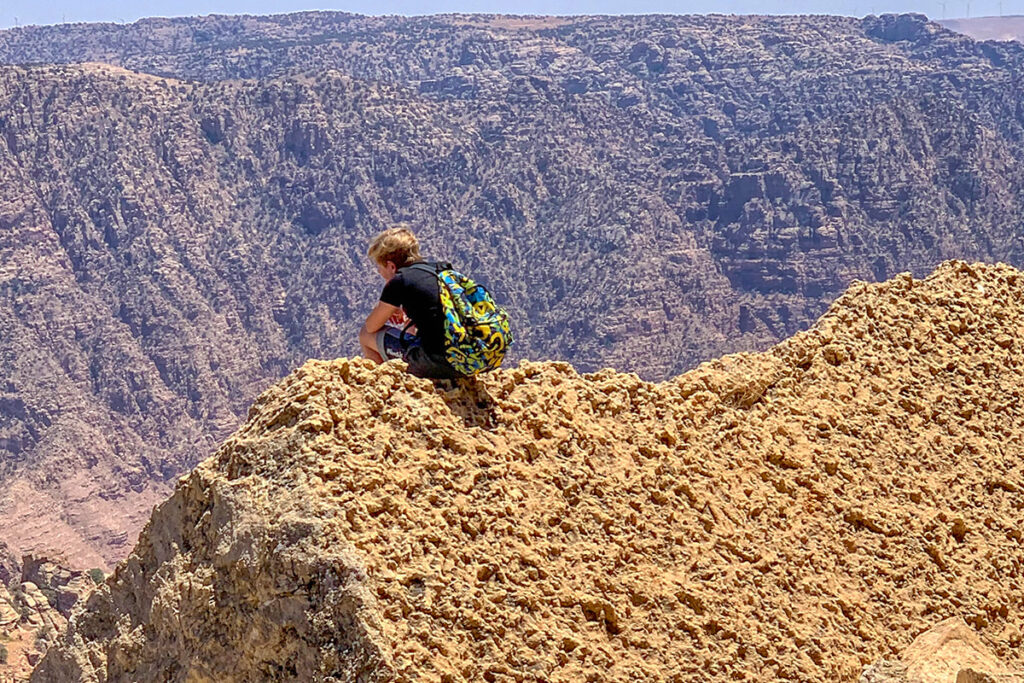
Key Moments in History
Establishment as a Protected Area (1993): Dana Biosphere Reserve was officially designated by the Royal Society for the Conservation of Nature (RSCN) to safeguard its unique biodiversity and cultural heritage.
A Natural and Ecological Gem: Spanning four distinct bio-geographical zones, Dana became renowned for its exceptional variety of flora and fauna, including endangered species like the Nubian ibex and Syrian serin.
Key Moments in History
Establishment as a Protected Area (1993): Dana Biosphere Reserve was officially designated by the Royal Society for the Conservation of Nature (RSCN) to safeguard its unique biodiversity and cultural heritage.
A Natural and Ecological Gem: Spanning four distinct bio-geographical zones, Dana became renowned for its exceptional variety of flora and fauna, including endangered species like the Nubian ibex and Syrian serin.
Integration of Local Communities: Early conservation efforts included empowering local communities through sustainable tourism, agriculture, and handicrafts, fostering a harmonious relationship between people and nature.
The Success of Eco-Tourism (1990s-2000s): Dana gained international recognition as a leading ecotourism destination, housing eco-lodges and promoting responsible travel to generate income for conservation and local development.
Biodiversity Research and Conservation Programs: Scientific studies conducted in the reserve highlighted its significance as a hotspot for biodiversity, leading to targeted programs to protect and restore key species and ecosystems.
UNESCO Recognition (2021): Dana was listed as a UNESCO Biosphere Reserve, affirming its global importance as a model for sustainable development and conservation.
Restoration of the Wadi Dana Ecosystem: Ongoing rewilding projects strengthened the reserve’s ecosystem, ensuring the survival of its unique habitats amidst modern challenges like climate change.
An International Example of Sustainability: Today, Dana Biosphere Reserve thrives as a living example of how environmental conservation, cultural heritage, and community development can coexist and flourish.
